COVID-19 lockdown restriction to be lifted in stages, virus claims life of elderly Aussie
Australia’s Chief Medical Officer has detailed how COVID-19 lockdown restrictions will be eased, with the national death toll rising after the death of an elderly Aussie.
Coronavirus
Don't miss out on the headlines from Coronavirus. Followed categories will be added to My News.
Claims Aussies are suffering ‘lockdown fatigue’
EU backs Australia’s call for international inquiry
US authorises ‘emergency use’ of antiviral drug
Countries to begin easing COVID-19 restrictions
Australia’s Chief Medical Officer has detailed how COVID-19 lockdown restrictions will be eased, as he called on more Australians to download the Federal Government’s coronavirus tracing app.
Professor Brendan Murphy said authorities were “seriously looking” at what lockdown measures could be relaxed, and would make recommendations to National Cabinet over the course of next week.
The Australian Health Protection Principal Committee (AHPPC) will meet next week to establish guidelines for easing social distancing and other coronavirus measures ahead of Friday’s National Cabinet meeting.
The reopening of university campuses will also be considered.
The extent to which measures will be eased will in part rely on the percentage of the country’s 16 million adults who have downloaded the COVIDSafe tracing app.
So far, almost 4.5 million Australians have downloaded and signed up for the app.
Prof Murphy said there would most likely be a staggered approach to lifting restrictions, warning that some countries had eased them too quickly and experienced a second wave of infections.
He said each stage would be reviewed for a number of weeks before a decision was made on whether to relax lockdown measures further.
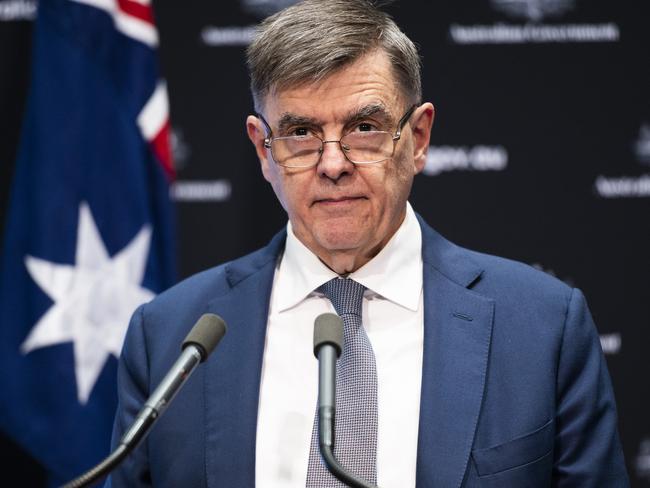
“This virus is still in our community, it’s still with us, we are... in a much better position than just about any other country in the world, but we have to be careful as we chart the next couple of months,” Prof Murphy said.
He said there had been an increase in movement which was consistent with decisions by some jurisdictions to ease lockdown measures.
Prof Murphy said he did not want to see people using saliva to shine cricket balls even after the coronavirus threat has passed.
He said that was one of many unhygienic practices he thought should be dumped from Australians behaviour entirely moving forward.
“In so many parts of our society, hygiene practices need to change,” Prof Murphy said
“We, as a first-world, very wealthy country, have probably become a bit relaxed about hygiene and I think its time that we focused on those things and have learned from those measures.
“I don’t think using saliva to shine cricket balls is a very good thing at all.”
Prof Murphy said there was 6,801 cases of COVID-19 in Australia, an increase of 18 cases in the last 24 hours.
There was still evidence of low-level community transmission of the virus, with small outbreaks detected in Victoria and NSW.
Australia has now recorded 95 deaths, the latest being an elderly woman in Western Australia and another person at the Anglicare-run nursing home, Newmarch House, in western Sydney.
WA Premier Mark McGowan on Sunday announced the death of the 83-year-old who died at home on April 30.
FRUSTRATION LED TO ATTACK ON ANDREWS:TEHAN
Federal Education Minister Dan Tehan has withdrawn remarks over Victorian Premier Daniel Andrews’ leadership, conceding frustration over schooling in the state during the coronavirus crisis led to his extraordinary attack.
On ABC television’s Insiders program on Sunday, Mr Tehan lashed Mr Andrews’ handling of the controversial issue of opening schools during the COVID-19 crisis, which federal Labor has described as “bullying”.
“The question to Dan Andrews is, sure, take a sledgehammer to defeating the coronavirus but why are you taking a sledgehammer also to your schools system?” an unusually heated Mr Tehan had said.
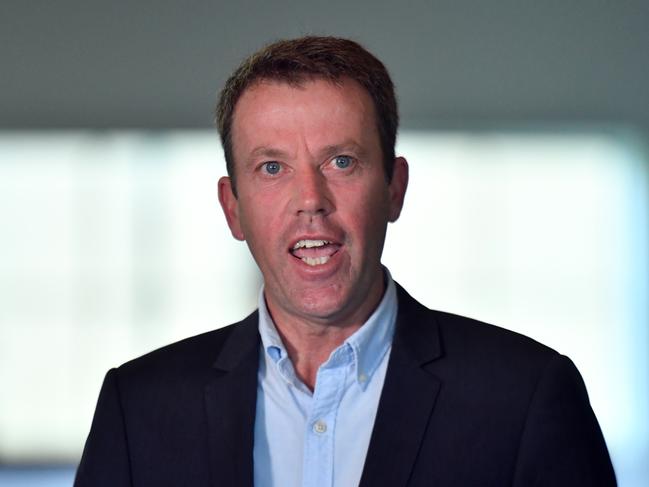
He said Western Australia, South Australia and the Northern Territory hadn’t had to quash their education system to fight the virus and have a 70 per cent attendance at their schools.
Pressed several time on the prime minister’s previous advice to parents about listening to their premiers, Mr Tehan said the government’s advice was that parents should listen to the medical experts.
“It’s safe for schools to be open and it is safe for teachers to be in the classroom when the right protocols are in place,” Mr Tehan insisted.
Several hours later, Mr Tehan issued a statement saying he had expressed his personal frustration that more schools weren’t starting more in-class learning in his home state.
“It was this frustration that led me to overstep the mark in questioning Premier Andrews’ leadership on the matter and I withdraw,” Mr Tehan said.
“I will continue working constructively with my state counterparts as they run their state school systems to support them with the best medical and education expert advice the federal government can offer.”
The attack had come before state health minister Jenny Mikakos reported a teacher had tested positive to COVID-19 at the Meadowglen primary school in Melbourne, which will be closed for three days for cleaning. Mr Andrews has been adamant in not opening schools for fear of spreading the virus, while Scott Morrison has urged all schools to open.
‘WE ARE LOOKING GOOD’: HEALTH CHIEF ON VIRUS ELIMINATION
Earlier, Deputy chief medical officer Nick Coatsworth was upbeat about Australia’s handling of the coronavirus, even as the country clocked up another death at a aged care facility in NSW.
Australia has now recorded 95 deaths, one of the latest at the Anglicare-run nursing home in western Sydney, bringing the fatalities in the Newmarch House aged care home to 14.
However, that toll is relatively small by international standards, as is the number of reported cases at 6787, a rise of 14 in the previous 24 hours. “We are looking good,” Dr Coatsworth told Sky News today.
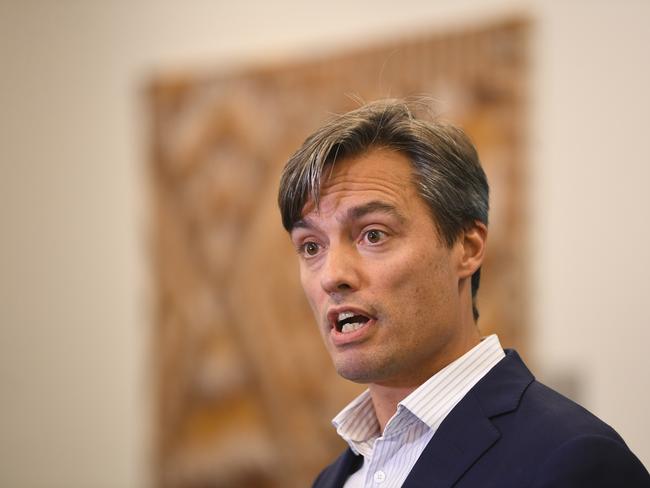
He said the concept of elimination of COVID-19 in Australia would be “magnificent to achieve” but challenging to sustain.
“Which is why we have taken a position of suppression,” he said. He said that was why there was extra testing for the virus, the COVIDSafe app to assist contact tracing and increased public health resources. “All those things are designed so that if there are small flares of coronavirus, spot fires if you will, that they can be suppressed very, very quickly,” Dr Coatsworth said.
“That offers the best balance of getting society back on its feet, confidence back into our society and living with coronavirus until a vaccine arrives.”
Some states have already started to ease restrictions and the national cabinet will on Friday consider lifting some broader curbs.
However, Prime Minister Scott Morrison has said relaxing restrictions would depend on Australians signing up for COVIDSafe app, which uses Bluetooth connections to determine who infected people came into close contact with. Some four million people have registered for the app but the government wants to see millions more by next Friday, a target that Deputy Chief Medical Officer Michael Kidd believes is “realistic”.
But he also admitted the app is not yet live and won’t up and running until next week,
Health officials cannot use the data but will be able to trace back from the time when someone first downloaded the app.
Meanwhile, Queensland police were forced to issue more than 30 infringement notices for breaches of COVID-19 restrictions on the first day of easing such curbs.
From Saturday, residents in the state could travel up to 50km from their home to shop, visit a park or even go to the drive-in.
BIGGEST DAY JUMP IN INDIA
India on Sunday reported the biggest one-day jump in coronavirus cases as the country of 1.3 billion enters the 40th day of a nationwide lockdown.
The confirmed infections have neared the 40,000-mark and the death toll has reached 1,301, including 83 deaths in the last 24 hours, which also saw 2,600 new cases.
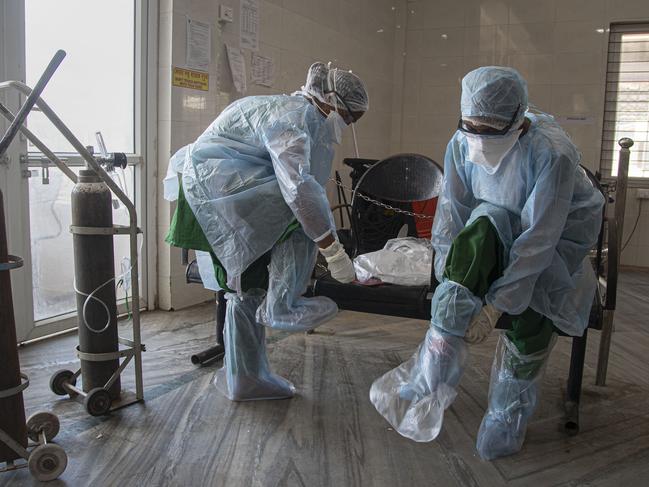
The six-week lockdown, which was supposed to end last Monday, has been extended another two weeks, with a few relaxations. The lockdown has slowed the spread of the virus, but has come at the enormous economic cost.
The Indian Air Force on Sunday conducted fly-pasts and showered flower petals on hospitals across cities, including New Delhi, as part of efforts to thank medical and police personnel for being at the forefront of the battle against the pandemi
SPANIARDS GET OUTDOORS
Thousands of Spaniards woke early and laced up their sports shoes on Saturday local time after a prohibition on outdoor exercise during the coronavirus pandemic ended after seven weeks.
Morning people dressed in athletic wear poured into the streets at 6am to run, bike, and speed walk, with many taking extra care to loosen up atrophied muscles so a twisted ankle or pulled hamstring wouldn’t spoil the rush of release.
“I feel good, but tired. You sure notice that it has been a month, and I am not in shape,” Cristina Palomeque, 36, said following a 20-minute jog in Barcelona.
A few tried running with face masks despite the added difficulty breathing.
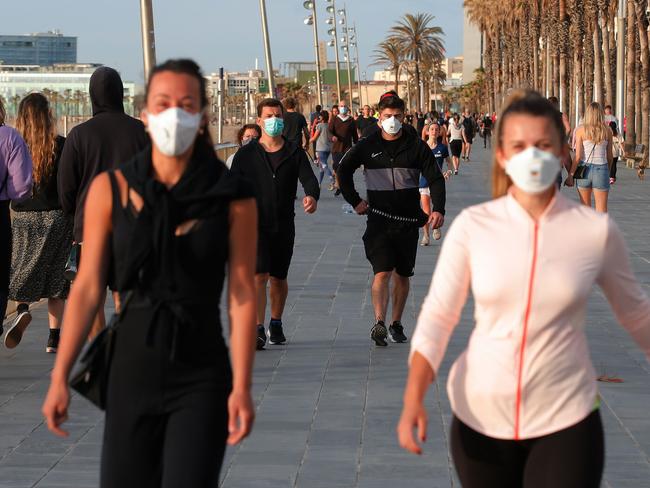
Masks will be required on public transportation starting Monday to prevent infections from the virus that causes COVID-19, which has heavily affected Spain.
According to a Reuters tally, Spain’s death toll stood at 25,100 as of Saturday.
SWEDEN PRAISED FOR LOW-KEY LOCKDOWN
The World Health Organisation lavished praise on Sweden as “a future model” in the next phase of fighting the outbreak because it has trusted people to observe social distancing rules.
Uniquely in Europe, Sweden chose not to tackle the pandemic with an enforced lockdown even though the policy has led to a higher death toll than in Denmark and Norway.
Dr Mike Ryan, of the WHO emergencies team, said it was wrong to believe that Sweden had “just let the infection spread”.
“Nothing can be further from the truth,” he said. “Sweden has set a very strong policy on public health, it is about physical distancing and how to protect the elderly in various nursing homes and much more.”
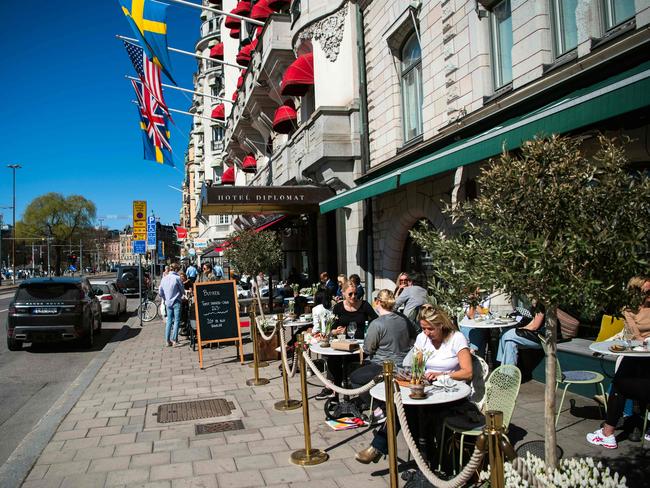
Instead of schools, bars, restaurants and shops being closed, Swedes have been advised rather than compelled by the police or fines to adopt social distancing measures.
“I feel confident in the overall strategy,” the prime minister, Stefan Lofven, said last week. “One reason that we have chosen this strategy, and where we have supported the agencies, is that all measures have to be sustainable over time.”
Sweden’s approach, said Dr Ryan, was a good example of how western societies could reach a “new normal”.
“What it has done differently is it has very much relied on its relationship with its citizenry and the ability and willingness of its citizens to implement self-distancing and self-regulate,” he said.
“They have implemented public policy through that partnership … Sweden represents a future model if we want to return to a society that we do not have to close.”
However, two of Sweden’s leading experts warned that the situation in its care homes and continued transmission of the virus were due to people ignoring social distancing rules in cities.
GERMANY EASES LOCKDOWNS
German authorities agreed on Thursday (local time) to reopen playgrounds, churches and cultural institutions such as museums and zoos that have been shuttered because of the coronavirus pandemic, but postponed a decision on whether to relax the rules for restaurants, hotels and kindergartens.
Chancellor Angela Merkel said there would be regional differences because of Germany’s federal structure, but the overall goal remained to ensure that the country’s health system could cope with the outbreak.
“So far, we have managed to succeed in doing so,” she told reporters after a meeting with the governors of Germany’s 16 states.
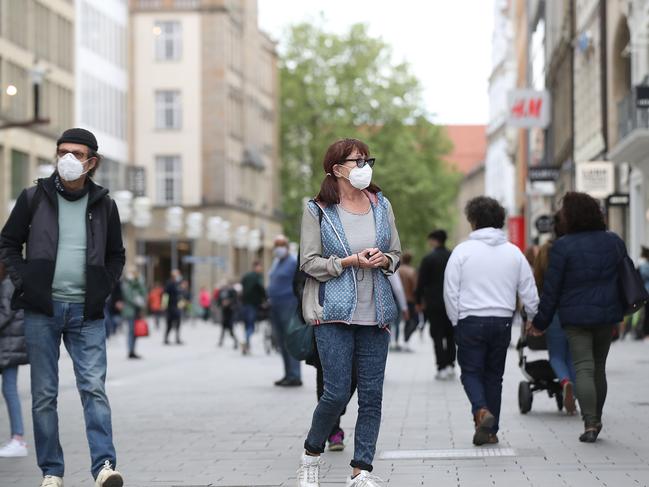
“We have all together achieved a lot in recent weeks.” The country of 83 million has recorded almost 162,000 confirmed cases of COVID-19 and 6467 deaths so far, according to figures compiled by Johns Hopkins University in the US. That is about a quarter the number of deaths reported in Britain and France, even though the three countries have a similar number of confirmed cases.
Over the past week, Germany recorded between 1000 and 1500 new cases a day, down from 2000 the previous week.
The country’s success in flattening the curb of infections has sparked calls for an end to the lockdown, particularly from businesses that have been forced to close because of social distancing measures.
Mrs Merkel said the federal and state governments wouldn’t make a decision on reopening hotels and restaurants at their next meeting on May 6, which will focus on further relaxing the rules for schools, childcare centres and sports facilities.
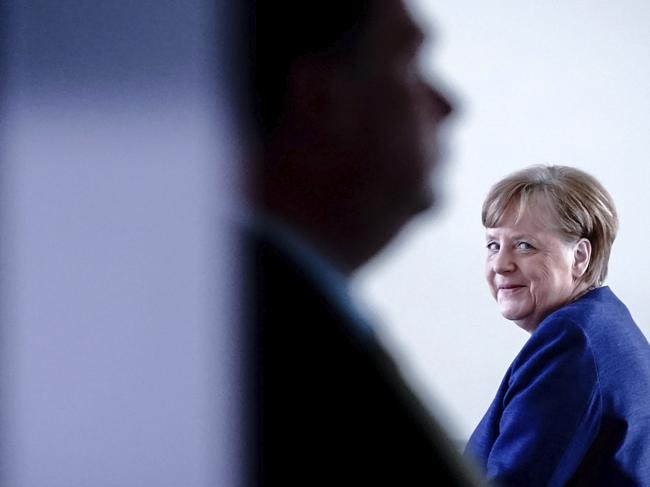
“Caution is required, as well as sticking to hygiene measures,” she said. The head of Germany’s disease control centre earlier Thursday likened the pandemic to a marathon.
“We simply don’t know how long it will take for the marathon to end,” Lothar Wieler of the Robert Koch Institute said.
Mr Wieler said Germany was currently going through the first wave of the pandemic. “The majority of scientists believe that there will be a second wave and maybe even a third,” he added.
Federal and state authorities also agreed on Thursday to extend the ban on large sports events, concerts and festivals until at least August 31. But hospitals will be allowed to resume routine operations that had been ordered put on hold last month, after data showed a sufficient reserve of intensive care unit beds in the country.
Still, like elsewhere, medical staff in the country are feeling the strain. “The burden is certainly great as we have to deal with a highly infectious disease every day, and the treatment regime is not clearly defined,” said Dr Daniel Heidenkummer, who oversees the treatment of COVID-19 patients at the InnKlinikum Altoetting, near Germany’s border with Austria.
The hospital has treated almost 600 patients with severe illness resulting from coronavirus since early March.
Restrictions on visitors mean that staff have to spend more time tending to the emotional welfare of patients, a burden that would normally be borne largely by friends and family, Dr Heidenkummer said.
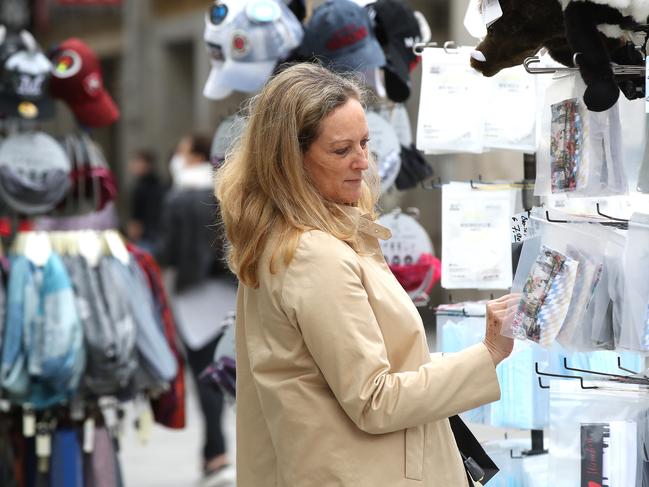
Mrs Merkel acknowledged the sacrifices made by many Germans because of the lockdown. But she warned against venting frustration at health experts who have been providing sometimes contradictory advice to the government, resulting in a zigzag of decisions in recent months.
“That’s in the nature of the matter,” she said, citing her own experience as a scientist before entering politics more than 30 years ago.
“That’s why science is so exciting, because you never do the same thing twice,” she said, adding that “we politicians are there to draw conclusions.”
FOUR MILION AUSSIES DOWNLOAD APP WITH GLITCH
More than four million people have downloaded the coronavirus tracing app — but it has a small glitch.
The AMA has also warned the NRL and other codes about starting their sport too early.
The prospect of a visit to the pub to watch a game of footy is seemingly edging ever closer as some states start to ease restrictions and the national cabinet prepares to consider lifting some broader curbs next week.
The Australian Border Force has given the go-ahead for players and staff from the New Zealand Warriors rugby league team to travel to Australia to take part in a proposed National Rugby League competition to start in late May.
Home Affairs Minister Peter Dutton said the ABF commissioner had carefully considered the request from the NZ Warriors, and advice from the Chief Medical Officer, that 36 foreign nationals do not pose a risk of serious harm to public health in Australia.
“New Zealand is a country which like Australia acted very quickly to close its borders,” Deputy Chief Medical Officer Michael Kidd told reporters on Saturday.
“It has been very successful like Australia in reducing community transmission.”
On Friday, Prime Minister Scott Morrison also floated the prospect of pubs reopening if enough people download the coronavirus tracing app.

Dr Kidd said more than four million have now registered for the COVIDSafe app, which uses Bluetooth connections to determine who infected people came into close contact with.
He believes it is “realistic” to expect millions more to sign up before the national cabinet sits next Friday to consider lifting restrictions.
But he conceded that app is not yet live and won’t up and running until next week, and health officials cannot use the data but will be able to trace back from the time when someone downloaded the app.
He said the app had a glitch, with reports that it may be interfering with diabetes-monitoring apps. He said it was being fixed but told diabetes patients to prioritise their diabetes monitoring and uninstall the app if it is affecting them.
Australia Medical Association president Tony Bartone cautioned the NRL and other sporting codes against rushing to start or restart competitions until medical experts say it is safe to do so.
“Sport is a big part of the Australian way of life, and the absence of sporting events is obviously affecting many people,” Dr Bartone said in statement on Saturday.
“But we have to put the broader public health implications first.” While the lifting of restrictions will be a relief to many Australians after weeks of isolation, a federal opposition frontbencher Andrew Giles believes people are equally concerned of a “second wave” of a virus that other countries thought they had under control.
AUSSIES HIT BY LOCKDOWN FATIGUE
If you are sick of being cooped up at home, it seems you’re not alone.
Australians have begun moving about in our capital cities their in an apparent sign of lockdown fatigue
According to a weekly update of aggregated travel patterns Google collected from users’ phones, the data pointed to increased disobedience with lockdown orders in place since March.
The data compared daily traffic to retail and recreational venues, parks, train and bus stations, grocery stores and workplaces with a five-week period from January 3 to February 6.
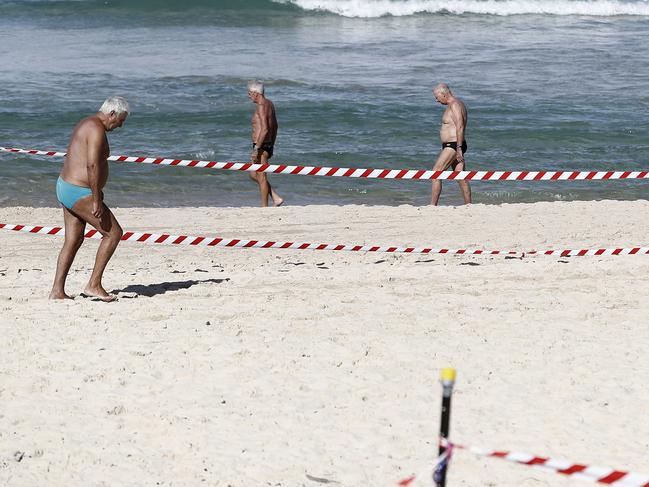
In Australia, visits to transit, workplaces and entertainment venues plunged 80 per cent in mid-April but rebounded later in the month when the rate of new cases slowed.
Google’s US data showed traffic to workplaces was creeping back up.
It was down just 48 per cent from the baseline by last Friday after being down 56 per cent on April 10. Southern and Midwestern states were leading the way in resumption of more typical patterns.
Epidemiologists had expected fatigue with lockdowns.
In the US those concerns have escalated as weather warmed and people protested against shelter-in-place orders. Infection rates have stabilised in some regions, prompting governors over the last week to ease lockdowns.
In comparison to Austrlia and America, residents of Singapore and Japan had spent more time inside at home over the past week.
AUSSIES SET FOR ‘CULTURE SHOCK’
A sudden change from home offices to downtown desks could spark a culture shock among Australian workers, an occupational health psychology expert says.
Households across the country could soon enjoy a further roll back in restrictions that have forced them to stay indoors for weeks to stop the spread of COVID-19.
The National Cabinet has brought forward to Friday a discussion about relaxing Australia’s coronavirus measures further.
While many workers are ready to return to their pre-pandemic professional lives, others may experience the shift as a jolt.
“I think most people will enjoy going back to work for the social aspect, seeing colleagues again, getting out of the house, being in the office again,” Griffith University psychology Professor Paula Brough said.
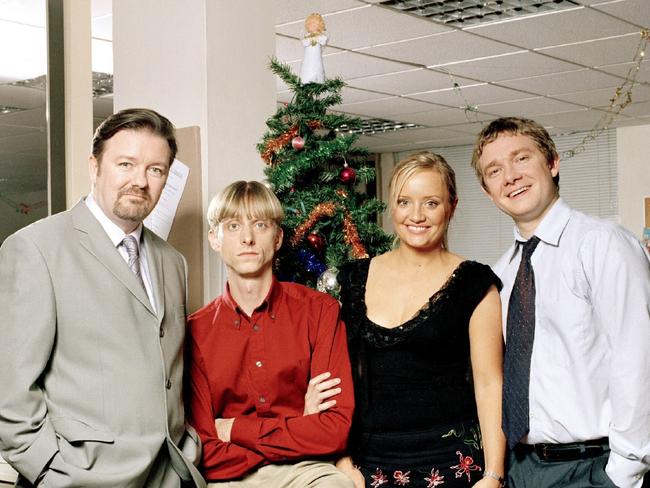
“But for some the adjustment might be hard and it might be a bit of a culture shock.
“Suddenly you might find yourself in a large room, full of 20 or 30 people perhaps in a meeting or teaching environment. Because you’ve been on your own so much, it might be a little more odd than it did previously. But that will wear off.”
However, Professor Brough said the need to take care of our mental health isn’t over, as our daily lives change yet again.
She is urging people to seek out the support of their friends, family and loved ones and get outside as restrictions are peeled back.
“The human contact and human connection is really important,” she added.
EU BACKS AUSTRALIA’S CALL FOR COVID-19 INVESTIGATION
The European Union has backed Australia’s call for China to be the subject of an independent, international inquiry into how COVID-19 originated – and how it was allowed to spread across the globe.
“I think this is for all of us important, I mean for the whole world it is important,” said Ursula von der Leyen, the head of the EU’s executive arm.
“You never know when the next virus is starting, so we all want for the next time, we have learned our lesson and we’ve established a system of early warning that really functions and the whole world has to contribute to that.”
It came as the US announced its Food and Drug Administration has approved emergency use of the antiviral drug remdesivir to treat COVID-19 victims after encouraging trial results.
President Donald Trump announced the FDA approval and called it “an important treatment for hospitalised coronavirus patients”.
“It’s really a very promising situation,” Mr Trump said.
Remdesivir is an experimental drug originally developed to combat the Ebola virus.
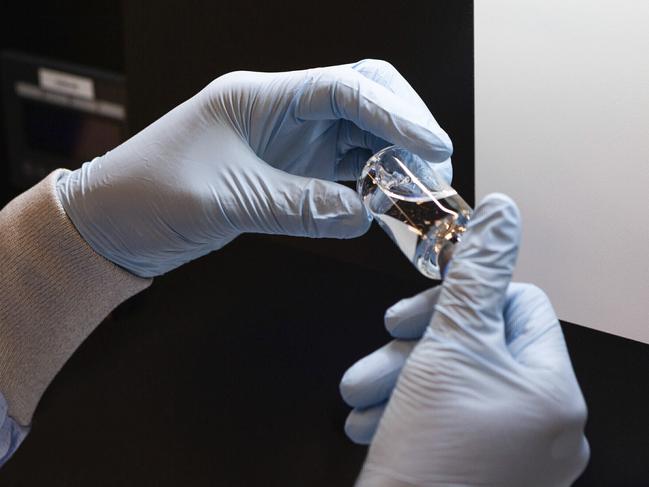
Meanwhile, the EU’s Ms von der Leyen said she did not think the international push for an investigation should be seen as an attempt to simply put blame on China.
“No, I don’t think so, because it’s all on our own interest. I mean, this pandemic has caused so much damage,” she told CNBC.
“So it’s in our own interest, of every country, that we are better prepared the next time. We will, we do not know when such a crisis occurs again, but we should be better prepared now.”
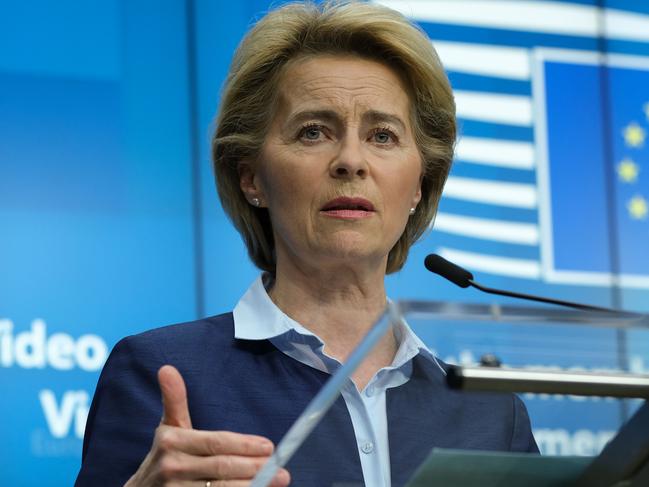
Australia and the US have been supported by Germany and Sweden in calling for a deep investigation into the origins of the virus – and how it was allowed to escape China and infect the globe.
As anti-lockdown protests raged across more than 20 states in the US, Ms Von Der Leyen said an inquiry would show the world what it needed to be better prepared to face such a crisis in the future.
“One of the lessons learned from this pandemic is that we need more robust data, overall, and we need more centralised than an entity that is analysing those data so that the early warning mechanism is way better,” she said.
“For example, at the level of the European Union, we know that we need a more robust data system for such situations as we see it right now with the coronavirus. And for building up a system that is, that you can count on.”
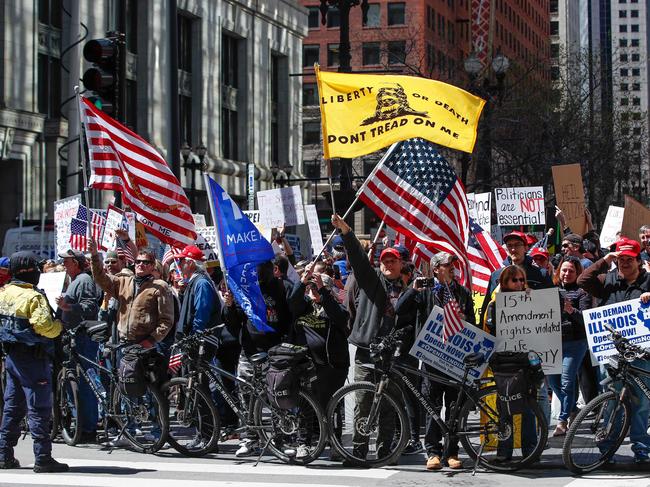
Meanwhile, the besieged head of the World Health Organisation says it will work to “identify the animal source” of the virus with the World Organisation for Animal Health and the UN’s Food and Agriculture Organisation.
Tedros Adhanom Ghebreyesus said WHO – which has received sustained criticism from US President Donald Trump over its handling of the crisis – would work with the two bodies to “identify the zoonotic source of the virus and the route of introduction to the human population, including the possible role of intermediate hosts”.
Dr Ghebreyesus defended waiting until January 30 to declare a public health emergency, saying WHO’s declaration gave the world “enough time to intervene”.
“The number of cases we had outside China was only 82 cases and there was no deaths, meaning the world had enough time to intervene,” he said.
“To declare a global emergency in that situation, I think, it says it all, it says it all.”
It comes after WHO’s representative in China said Beijing was refusing to collaborate with the UN agency in investigating the origin of the virus and how it spread around the world.
SPORTS TO RESUME AS AUSTRALIA LOOSENS LOCKDOWN
Using sweat or saliva to shine up a cricket ball, barefoot bowls and tackling or wrestling in rugby league training will be the last restrictions to go under a COVID-19 safe sporting life in Australia.
Comprehensive recommendations produced by the Australian Institute of Sport map out a pathway for states to restart community and professional sports, but some major hygiene changes would remain in place long-term.
There’s no set start date for any of the stages, with health officials expected to consider options in the coming weeks.
Under the AIS guidelines, in the first stage of relaxed measures, sports with minimal contact including archery, cycling, equestrian, golf, rowing, sailing, surfing and swimming would be allowed to resume as solo or pair activities.
But group sports like netball, AFL, rugby league, union, cricket and soccer would only be able to do solo running, resistance or skills training.
Tennis players could train using a ball machine, while basketballers could practice shooting hoops or throwing the ball against a wall – but not to others.
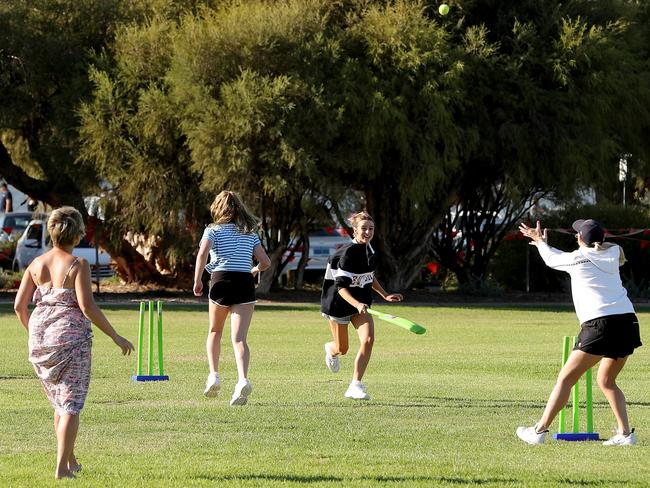
The AIS recommends the approach to training should focus on “get in, train, get out”, minimising unnecessary contact in change rooms, bathrooms and communal areas.
In the second stage of easing, ball sports would be allowed to do some controlled kicking or passing drills, but no further physical contact.
Sports such as karate and judo would be allowed to do “non-contact” shadow training with a sparring partner or coach.
Most sports would not be able to fully resume until stage three – when barefoot bowls would be permitted – but some social distancing is recommended permanently.
Recommendations for ongoing restrictions included for AFL maintaining group separation, keeping mid, forward and back players from mingling, while for cricket shining the ball with saliva or sweat should remain banned.
Those restrictions should also apply to professional cricket and AFL players.
People should not be able to play sport if in the last 14 days they have been unwell or had contact with a known or suspected case of COVID-19.
AUSTRALIAN RESTRICTIONS TO EASE WITHIN A WEEK
Australians have been so successful flattening the coronavirus curve they have earned an “early mark” with restrictions to start being eased in just one week, Scott Morrison has revealed.
The Prime Minister said the National Cabinet of state and territory leaders had agreed to consider easing strict shut down measures from May 8 – a week earlier than was originally planned when the committee agreed to wait a month before moving any reactions.
Mr Morrison said one “critical” element in deciding how far restrictions are rolled back included how many people downloaded the federal government’s COVIDSafe app.
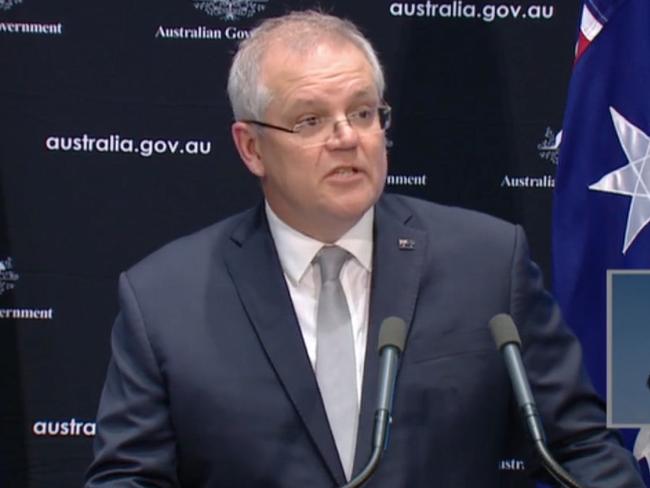
“It’s over to you Australia, as we get through this next seven days,” he said.
Mr Morrison said not installing the app was like going into the “blazing sun” without wearing sunscreen.
Asked what restrictions could be eased from next Friday, Mr Morrison said a broad review of the rules was under way but he would not “second guess that process”.
Aged care providers will receive a share of $205 million from the federal government as a one-off payment to support them with additional costs and expenses dealing with the COVID-19 pandemic.
Originally published as COVID-19 lockdown restriction to be lifted in stages, virus claims life of elderly Aussie
